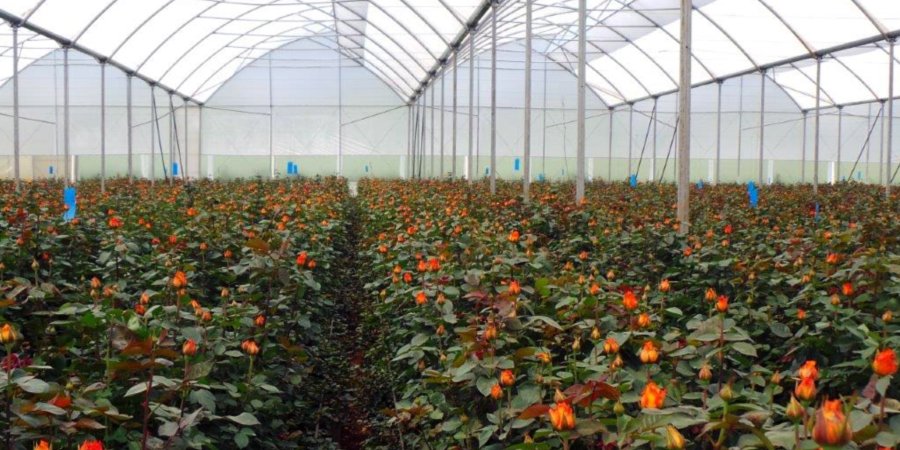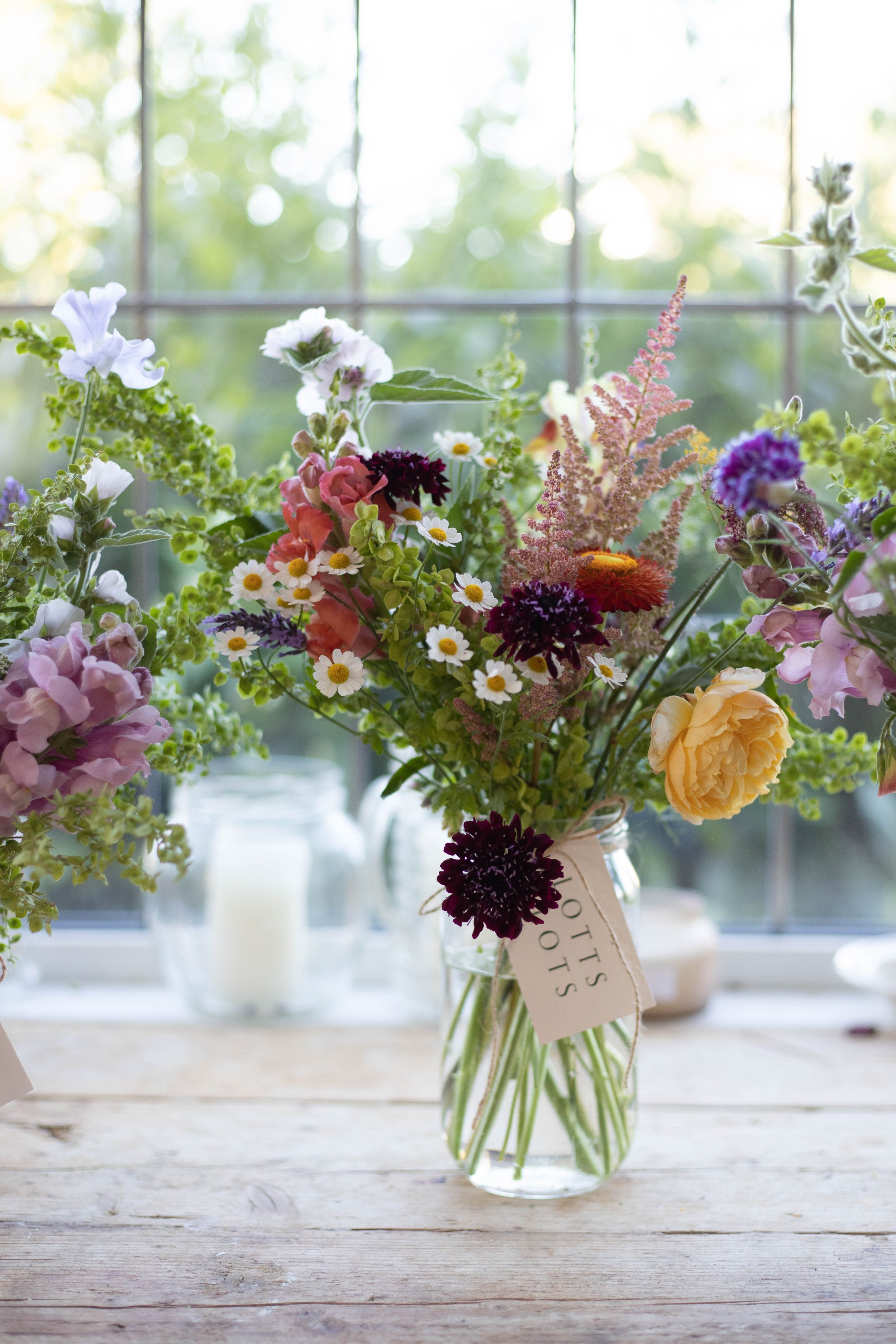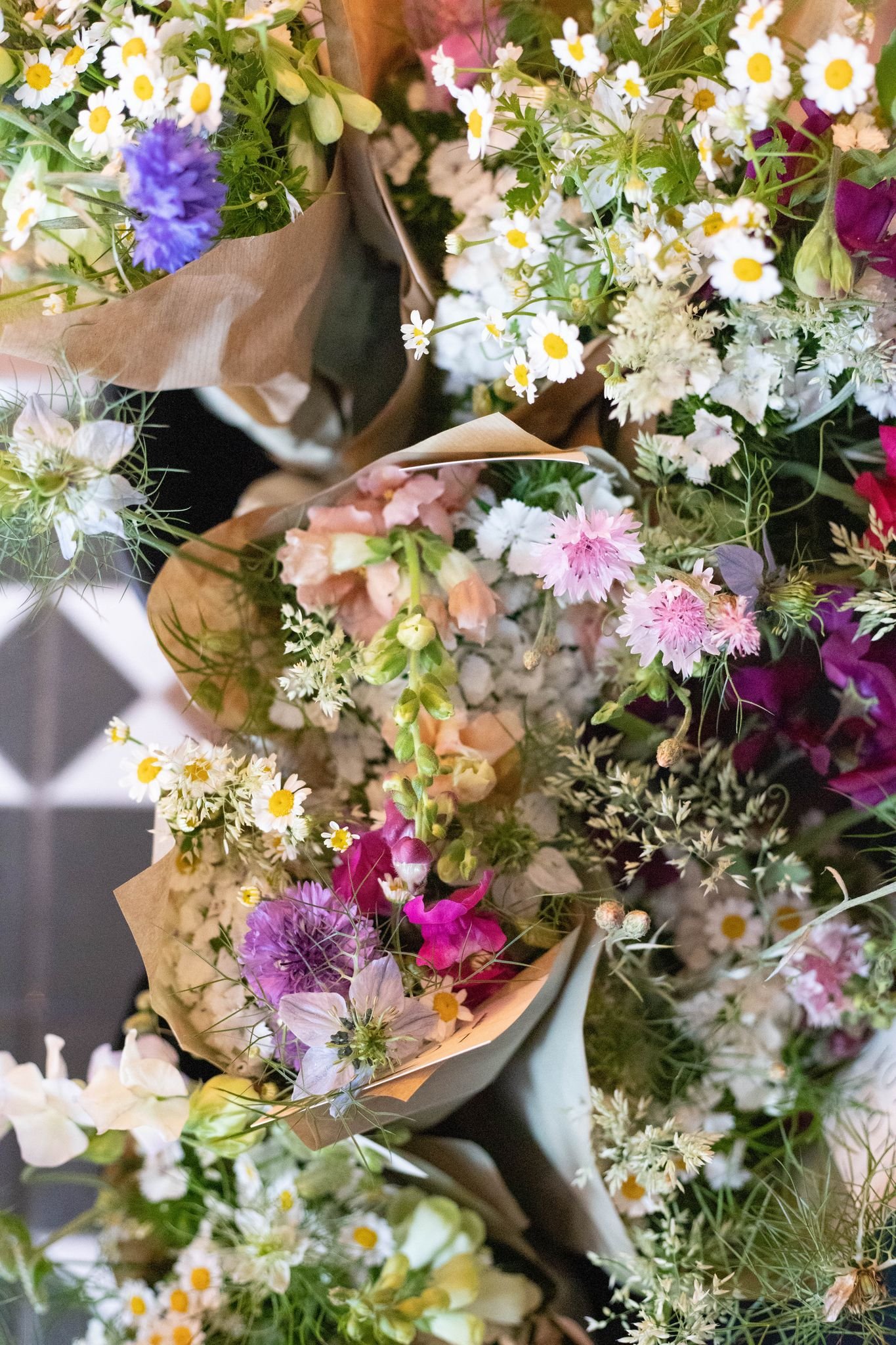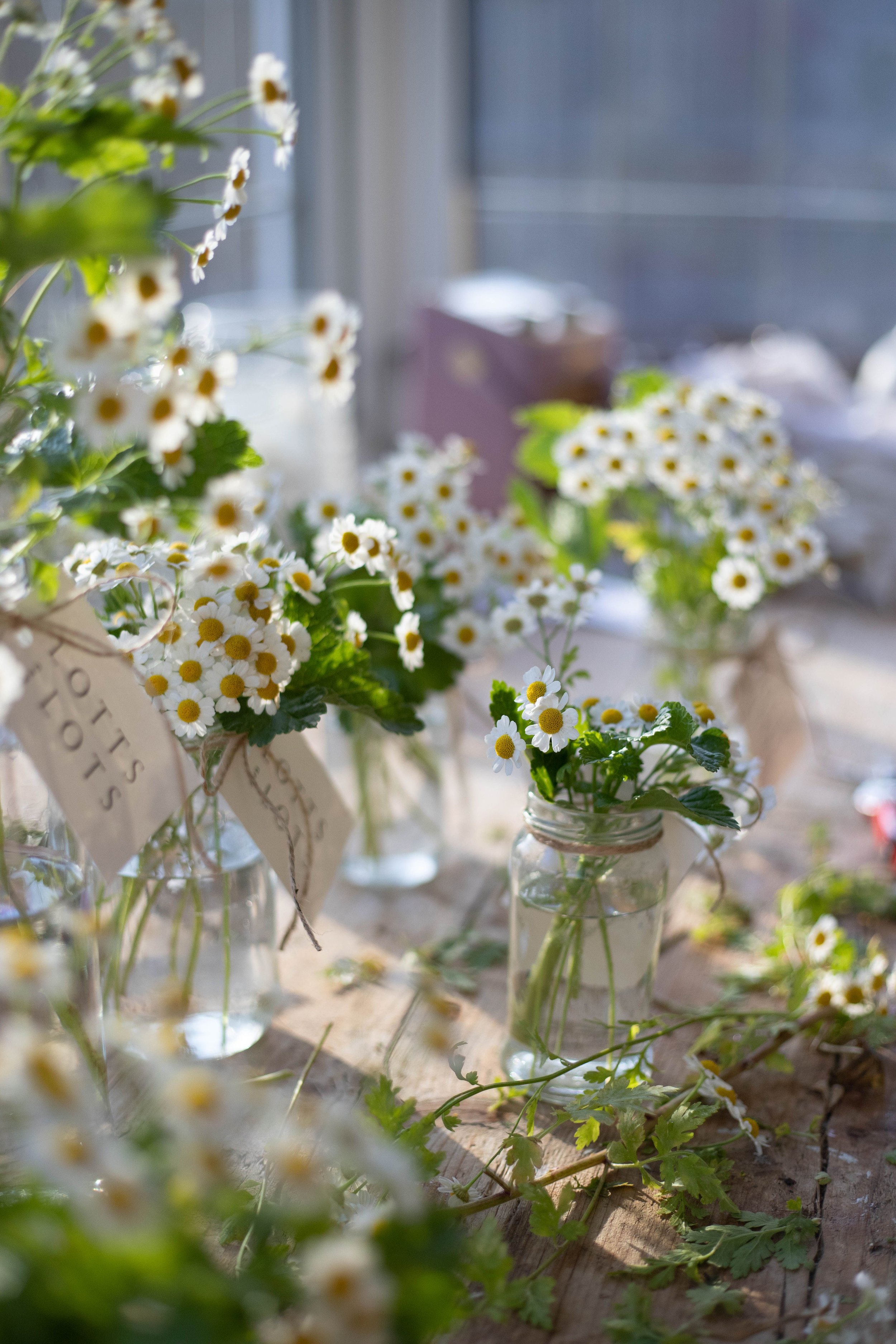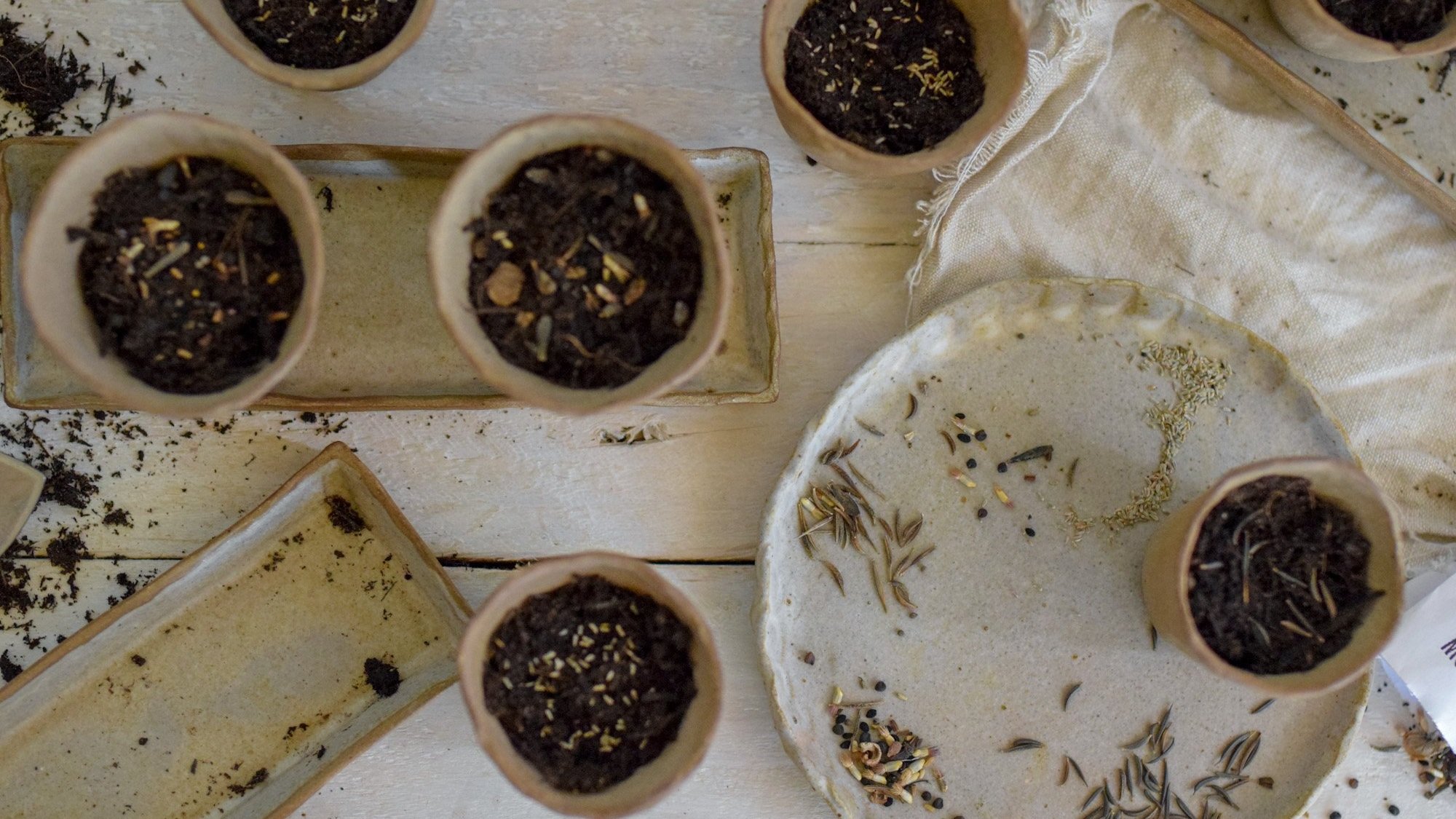Sustainable Flowers // from the soil to the vase
The spring and summer months are a beautiful time of the year to fill your home and garden with flowers and their wonderful scent. The relaxing art of arranging stems is good for the mind and helps soften our spaces so they feel warm and full of love. It can however be easy to disconnect from understanding where these blooms come from and how they end up in our homes.
The mass production of flowers creates a series of issues and the environmental impact of our imported blooms is something to consider and understand.
A Kenyan flower farm
The cut flowers available to buy in the UK are grown in countries where climatic conditions can provide year round production with low labour costs. Kenya, Colombia, Ecuador and Ethiopia are the world’s leading producers and on average the emissions costs for an imported mixed bouquet are 10 x that of a British-grown mixed bouquet.
Basically any flower that travels from one country to another require lots of energy, to heat green houses, refrigerate once cut and to transport when fresh. The use of water, pesticides and plastic packaging are also something to consider.
One of the biggest concerns I can see is how these exported cut flower farms contribute to what is widely referred to as the insect apocalypse. All our lovely and extremely important pollinators are very vulnerable to the toxic effects of pesticides being sprayed on the flowers. These harsh chemicals are not only damaging to our bug life but also have a negative effect on the air, soil and water supply, which in turn affects human life too.
Choosing to grow your own blooms or to buy from a British source is a sustainable choice which also provides a happiness for you and your local habit. The bee’s and butterflies will thank you later.
I understand that growing your own may not provide the same instant pleasure you get when buying a bouquet, however you could create a new sense of wellbeing from tending to home grown flowers while also providing a safe space for many bees and insects.
You do not need an allotment or raised beds to grow your own flowers, however that can be magical if you do have the space at home! If not, then you can start with just a few small pots on a window shelf. Once your little plants are big enough you can then transfer them to a bigger pot or some organic soil in an outside space.
Taking the time to sow some seeds even on a small scale is a conscious way to connect with the seasons which otherwise are easily lost to acts such as chasing the ice-cream van.
I caught up with the flower grower and educator Charlotte Smith of Lotts and Lots, to have a natter about her mirco flower farm based in Leigh-on-Sea. She sells her beautiful flowers direct to the customer via her website and in addition supplies her ‘best of the week’ bunches to a local high street store.
What led you to grow and sell flowers?
It’s a long story but simply, I’ve always loved and felt very connected to flowers.
Years ago I begun blogging when I discovered jewellery making which I loved. As I started to share more DIY tutorials and take more photographs I’d use flowers to indicate seasons and use them to compliment what I was making. Buying flowers became expensive and as time moved on I moved from a flat to my house so finally had a space to grow my own to start using in my photography. At first, I tentatively planted bulbs and grew nasturtiums but as I gained more knowledge I started to grow more and more. During this time I had my two children which meant the jewellery making took a back seat but the joy I got from my garden escalated. I hastily planted a crop of ranunculus during a nap time which bloomed abundantly the following Spring. That spring was during 2019, with nothing else to do and feeling brave I started a flower stall outside my house. Those little jars sold out so I kept going during the summer, word spread and the week I sold out within 15 minutes I knew I’d found what I was meant to do. I took a Floret Farm, flower farming course the following winter and have never looked back, I’ve been converting every spare space in my garden into a thriving flower farm.
Do you feel growing flowers connects you to the seasons and the natural world?
Absolutely! Everyday there is something new to marvel at, even during winter. I love how you can tell the time of year by what’s blooming and what is finishing, there is a feeling of being gently moved forward as the Earth turns.
When I worked in offices I would always longingly look at the window and feel so trapped, I’d try and escape to some beautiful gardens I discovered around Temple during my lunch breaks as a relief.
The more I got my hands dirty and worked the soil the more myself I have
become - I couldn’t ever image being inside again.
What’s your favorite season and why?
Ooh that’s a tricky one but it would have to be early summer, when the mornings first have warmth in them and the roses and sweetpeas have begun to bloom. I live close to the sea so the mix of salty air and fragrant flowers is dreamy. I do also love deep winter, when everything is still and the first green shoots start to push up from the soil and the earth is bare, there is a lot of peace there.
Do you have a favorite flower and what are you growing this year?
Poppies are my favourite as they are wild, strong and beautiful.
Ironically they don’t like being cut so I press the petals between book pages and find them months later! This year I have a dedicated patch for them as the seed heads are wonderful to use in arrangements and fabulous for dried wreaths.
I’m also growing lots of ranunculus, sweetpeas, snap dragons and Ammi. Lots of this years plants have come from my own seed which is exciting as it means my flowers are truly local.
Do you have any expert advice or tips for someone attempting to grow
from seed for the first time?
It’s tempting to buy ALL the seeds but I would try and limit yourself to 5 or 6 varieties and get them growing. Don’t worry too much about getting thing ‘right’, different years throw up different conditions so give things a try more than once. Also try growing the same plant in different spots that way you can see where it flowers best and then grow
more in that spot. If you are buying seeds try a choose and mix of shapes so you always have a good mix of textures and interest when they are picked.
Alongside working as a cut flower farmer, you also deliver workshops.
What can we expect from these?
I have been running workshops since my jewellery making days and now I deliver workshops with a floral theme. That could be seed sowing and jam jar arranging to dried wreath making to Christmas crafting. I love to use the flowers I grow as my craft materials, sharing how flowers can be used beyond the garden. I recently ran an art journaling session with a local artist based around creating a garden which was a great way to see
out winter and get really inspired for the year ahead. I try to create a space for all my attendees to get inspired and relax and take a bit of time out from daily life.
And finally can you share with us who inspires you?
Ha, this could be a long list. Flower growing wise it has to be Erin at Floret Farm. I’ve been so inspired by her books and enthusiasm when taking her course, I love how passionate she is about sharing her knowledge and getting people growing no matter what size their plot is.
Personally, travel is my greatest inspiration, I love seeing and experiencing different places and people. My friends and I went to
Marrakech last year which was so special. We visited the most heavenly
gardens that made me cry, I’m still looking at and processing the photos!
Generally I love seeing people who carve out a life for themselves outside the ‘norm” and follow their passions to make the world a better place to be.
Thanks so much for having me. Your tea light holders make perfect seed holders!
Growing your own - step by step
If you fancy sowing some seeds for the first time here’s a quick little guide which details how I do it without a greenhouse, or anything else large or expensive. You will need a few mini pots, a handful of seeds and half a bag of soil. Every year I start growing lots of things this way from flowers to veg. I simply grow and water them on my bathroom window ledge, because in the afternoons its the sunniest spot in the house.
To start you can find a local (family run) Garden Centre or a friend that may give you some seeds they have harvested from the previous year.
Once you have your seeds, get yourself a small bag of Peat-free all-natural compost.
Select a few small pots or containers to use. I recommend ones with a hole in the base and a dish underneath as this allows the water to drain.
Fill your pots with the compost and press down with your thumb gently but firmly so it is nice and snug. Leave 1 to 2 cms of space at the top of the pot.
Place a few seeds into your hand, then pinch up a small amount and scatter them thinly and evenly across the compost surface.
Sprinkle some more compost very lightly over your seeds. If you are using seeds from a packet it should inform you of the depth they should be sown.
Very gently water your seeds and place in a warm spot. Ideally somewhere that gets some sunlight during the day. I like to slowly pour water into my palm and release it softly over my sown pots.
Check in on your seeds regularly and top up with water to prevent them from drying out.
Enjoy helping them grow and once big enough transfer them to a larger pot or your outside soil, keep watering and watch the flowers pop.
TWINN seed sowing sets and hand pinched plate.
Once your flowers have grown, you can of course just leave them as they are in the soil, where they are protecting our biodiversity and supporting our little pollinators. Or you can choose to cut the stems and arrange in a simple bud vase or Ikebana to admire and brighten up a space inside your home. Both choices will definitely bring you joy!
If you do choose to give them a snip, it’s always best to cut flowers in the morning or the evening and avoid doing so in full sun. It is also worth cutting them at an angle to help them take up water in a vase.
When you grow your own like this or buy from local growers, you are reducing our environmental impact, connecting to the pace of the season around you and supporting your local growers and the bio-diversity of the planet. How blooming lovely!


